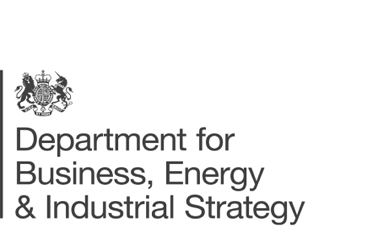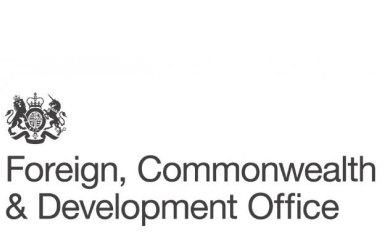This document compiles the experience of promoting BIM, and the design and implementation of national plans, related to the methodology by the member countries of the BIM Network of Latin American Governments. The strategies and actions that public institutions in the region applied according to the BIM Initiatives of each country are identified. The intention is that this document is a point of reference for the implementation and promotion of BIM by the State, from a Latin American perspective built on the basis of the local realities of each of the countries that make up the Network. With this document , we hope to encourage the creation of support networks for the transfer of knowledge, experiences and lessons learned.
Includes BIM progress and requirements.
Building Information Modeling (BIM) for federal buildings is a cooperative working methodology with which, based on digital models of a building, the information and data relevant to its life cycle are consistently recorded, managed and exchanged between those involved in transparent communication or handed over for further processing become. This information and data is documented digitally throughout and according to a uniform structure. Further information can be found in the BMVg information flyer (see downloads). To implement the BIM method for federal buildings, the goals and implementation strategy were described in a master plan. This is, among other things, the basis for a BIM manual in which the work aids (AH) required for operational safety are gradually developed and published for all relevant subject areas. The master plan and completed AH are available for download in the download area.
https://www.fib-bund.de/Inhalt/Themen/BIM_fuer_Bundesbauten/
The industrial strategy highlights the need for a green, digital and sustainable construction ecosystem. Several other European initiatives emphasize the role of construction in achieving goals such as renewal, circularity, climate adaptation and mitigation or employment. EC legislative initiatives, directly or indirectly related to construction, introduce changes in the industrial ecosystem.
In 2015, the BIM Laboratory of Santa Catarina was created, known as LaBIM-SC, which was part of the BIM GOV SUL Network together with the states of Paraná and Rio Grande do Sul. LaBIM-SC was in charge of preparing case studies, with the aim of maximizing the potential gains with the use of the BIM methodology applied to projects, execution and inspection of works, as well as management and operation of assets.
There are numerous initiatives within the scope of the Federal Government for the adoption of BIM in Brazil, one of them is the publication of Decree nº 9.983, in 2019, which established the National Strategy for the Dissemination of BIM. This action, in addition to structuring the adoption of BIM at the federal level, also fostered and encouraged the use of BIM in state projects and works.
In order to coordinate and structure BIM actions in Catarina, Decree No. 1,370 of 2021 was published, which establishes the State Strategy for the Implementation and Dissemination of BIM in Santa Catarina (BIM SC Strategy) and the Technical Committee of the BIM SC Strategy (CT-BIM SC), currently formed by eleven public entities. This document shares the BIM Roadmap as well as the 10 objectives of the strategy which include:
- Disseminate the BIM concept and its benefits
- Coordinate the structuring of the public sector for the adoption of BIM
- Promote organizational, cultural and process changes for the adoption of BIM
- Create conditions for the adoption of the BIM methodology throughout the construction life cycle
- Stimulate and promote training in BIM
- Propose regulatory acts that establish parameters for purchases and public contracts with the use of BIM
- Develop technical standards, guides and specific protocols for the adoption of BIM
- Develop the portal and BIM SC library
- Stimulate the development and application of new technologies related to BIM
- Encourage competition in the market through neutral standards of BIM interoperability
https://www.bim.sc.gov.br/c%C3%B3pia-cadernos-t%C3%A9cnico-bim-sc
An archive version of this information article has been created if the original is no longer accessible (Archive information from January 2024)
Plan BIM Peru is the programme supported and promoted by the Peru Ministry of Economy & Finance (MEF) for the successful adoption of BIM Methodologies in public infrastructure investment throughout the country. Within the framework of Plan BIM Peru, BIM is defined as a collaborative work methodology for the management of public investment information, which makes use of an information model created by the parties involved, to facilitate multi-year programming, formulation, design, construction, operation and maintenance of public infrastructure, ensuring a reliable basis for decision-making. BIM does not only refer to the use of technological tools. Its main objective is to ensure efficient information management. BIM is essential for the planning and execution of an investment, from the definition of asset requirements to the end of their use, covering their conception, development, operation, maintenance and disposal.
Plan BIM Peru is the policy measure that defines the national strategy for the progressive implementation of the adoption and use of BIM in the processes of the phases of the investment cycle developed by entities and public companies subject to the National System of Multiannual Programming and Investment Management, in an articulated and concerted manner, and in coordination with the private sector and academia. Plan BIM Peru was born as a political measure of the National Competitiveness and Productivity Plan, recognizing the need to modernize and digitize the systems for the formulation and evaluation, execution and operation of investment projects. The resources on the website help with the implementation of BIM.
PlanBIM Peru Implementation Plan and Roadmap
An archive version of this information article has been created if the original is no longer accessible (Archive information from January 2024)
This strategy document sets the digital strategy vision for 2030 within Vietnam. The overall aim is for Vietnam to become a prosperous digital country that pioneers trying out new technologies and models; has completed fundamental and comprehensive reforms in Governmental operation, economic activities of enterprises and the way people live and work, and has established a safe, civilized and widespread digital environment.
Through a series of headings and bullet points this strategy and vision document articulates all of Vietnams drivers and actions relating to digital construction and BIM.
https://moc.gov.vn/Images/FileVanBan/BXD_1004-QD-BXD_31072020.pdf
An archive version of this information article has been created if the original is no longer accessible (Archive information from January 2024)
The decision notice 942/QD-TTg has been published to develop BIM adoption in Vietnam with an aim to strive to reduce least 20% of administrative procedures of state agencies by 2025. On June 15, 2021, the Government published the Decision No. 942/QD-TTg approving the e-Government development strategy towards the digital Government in the 2021 – 2025 period, with a vision to 2030. The decision also sets targets towards 2025 include: At least 80% of administrative procedure records are processed completely online and people are only required to declare data once; 100% of state agencies provide services 24/7 and are ready to provide online services at any time; 100% of officials have digital identities for work; At least 20% of administrative procedures of state agencies are reduced compared to the current number; Each citizen has a digital identity and QR code, striving so that all citizens have smartphones; etc.
The decision sets out the governments digital strategy and vision with the key tasks in the Strategy being: Researching on and proposing amendments to the Law on E-Transactions and guiding documents; Developing and operating stable, safe and uninterrupted specialized network infrastructure that connects administrative levels from the central to commune level based on specialized data transmission networks; Developing and completing the national public service portal so that people and enterprises can access online public services of ministries, sectors and localities; etc. This Decision takes effect on the signing date.
An English version of the decision is available here: https://english.luatvietnam.vn/decision-no-942-qd-ttg-dated-june-15-2021-of-the-government-approving-the-e-government-development-strategy-towards-the-digital-government-in-the-20-203675-Doc1.html
https://datafile.chinhphu.vn/file-remote-v2/DownloadServlet?filePath=vbpq/2021/06/942.signed.pdf
#SPILL!
The Ministry of Communities and Territories is the Ukrainian government ministry responsible for public housing infrastructure development. The Ministry was established in 2005 as the Ministry of Construction, Architecture, Public Housing and Utilities. It also can be considered as a successor of the Ministry of Construction and Architecture that existed before 1994. In 2007-2010 the ministry was split into two: Ministry of Regional Development & Construction and Ministry of Public Housing and Utilities.
The purpose of adopting the order of the Cabinet of Ministers of Ukraine “On approval of the Concept of implementation of technologies of construction information modelling (VIM-technologies) in Ukraine and approval of the action plan for its implementation” is to determine the principles and mechanisms for implementing state policy on the introduction of construction information modeling technologies as a tool for further reform, modernization and digital transformation of the construction industry of Ukraine.
The draft act proposes the introduction of phased, gradual modernization and digital transformation of the construction industry of Ukraine through the introduction of construction information modeling with the simultaneous creation of appropriate conditions, including the implementation of regulatory and regulatory and regulatory regulation of the processes of implementation of projects for the construction and operation of buildings and structures.


